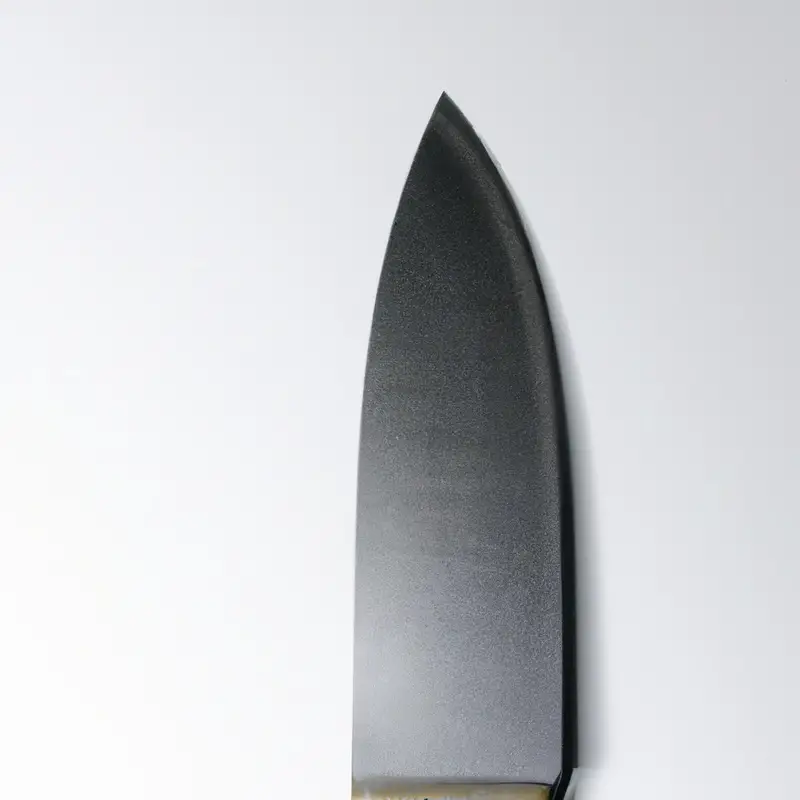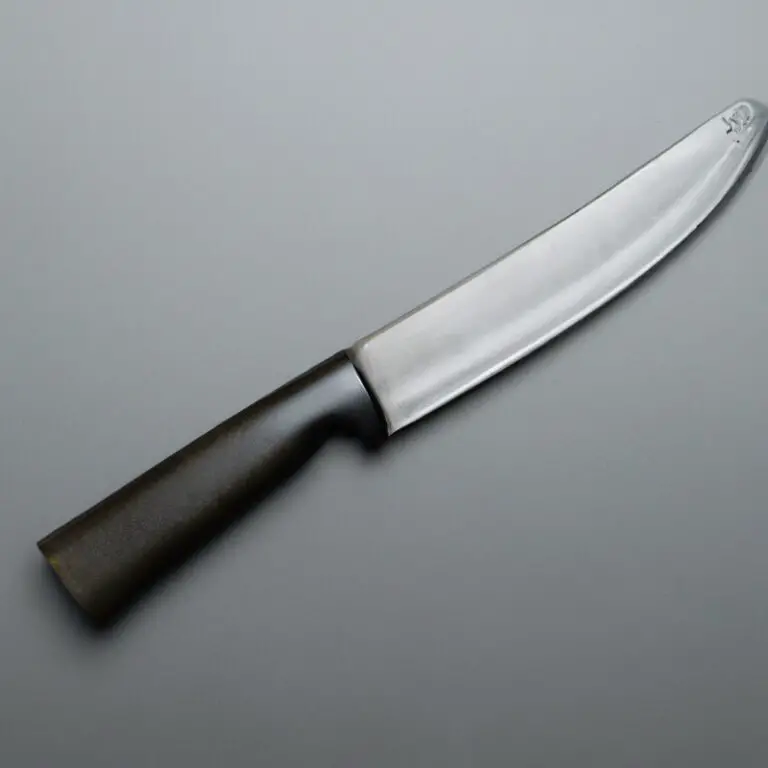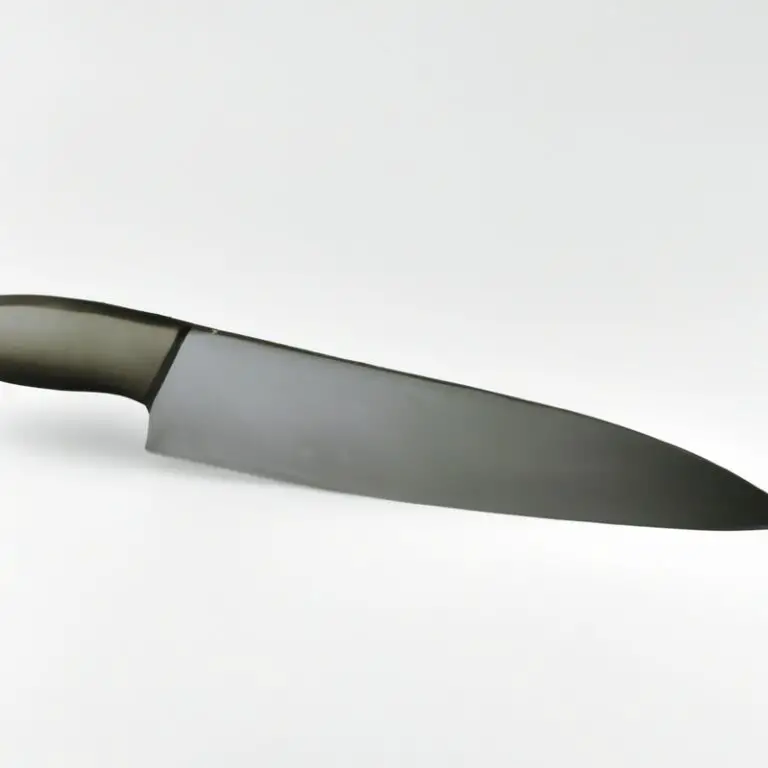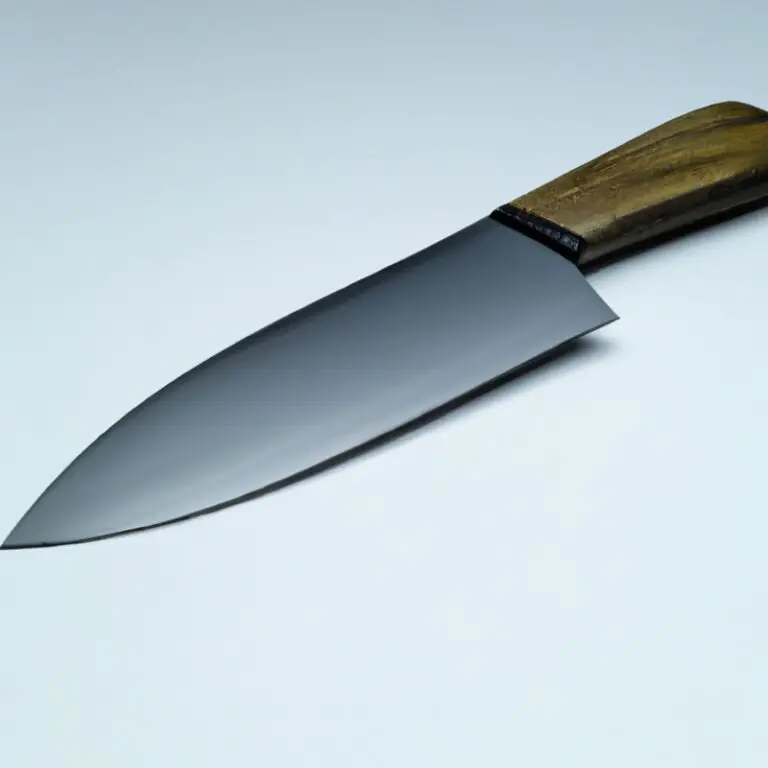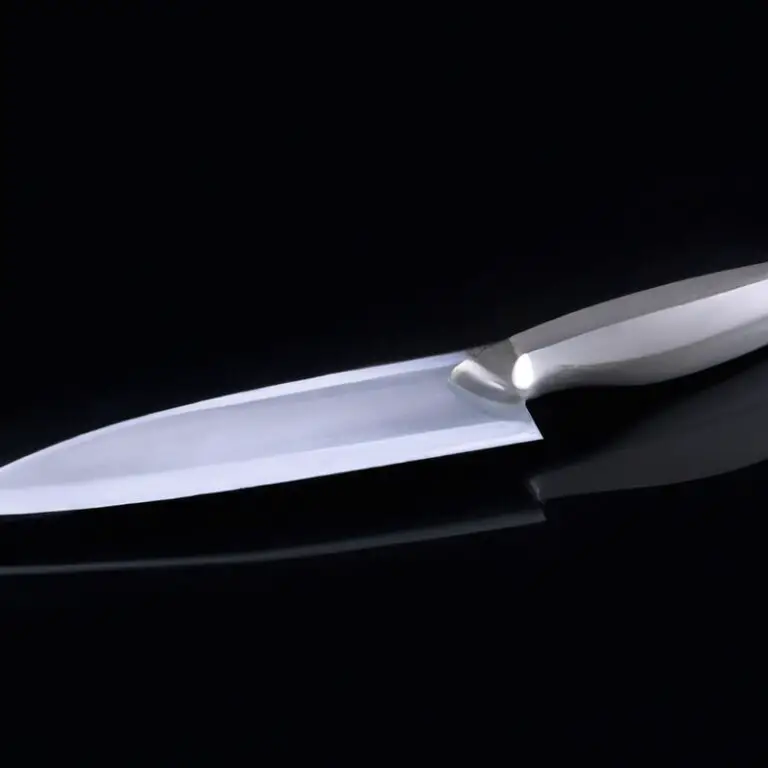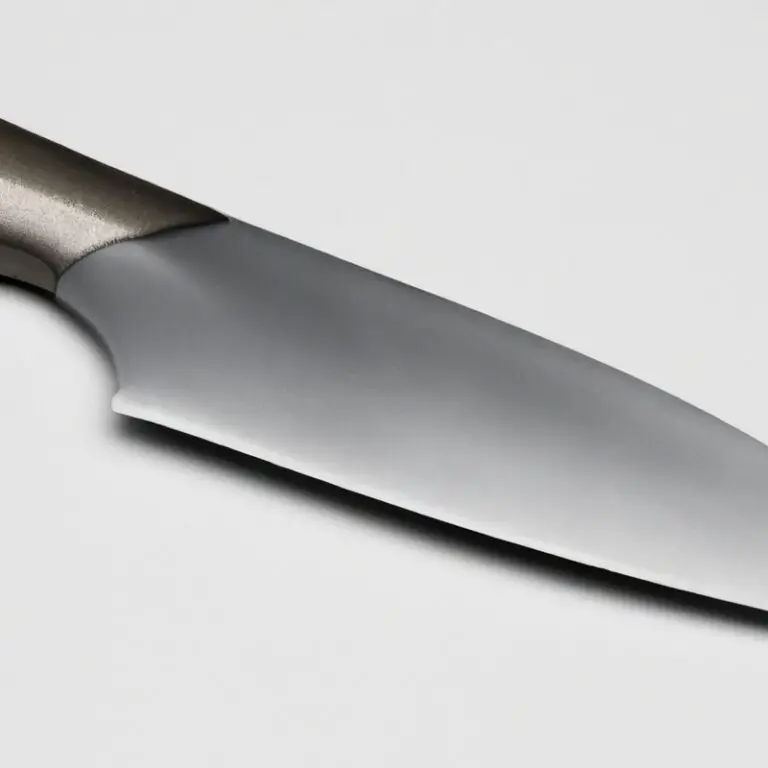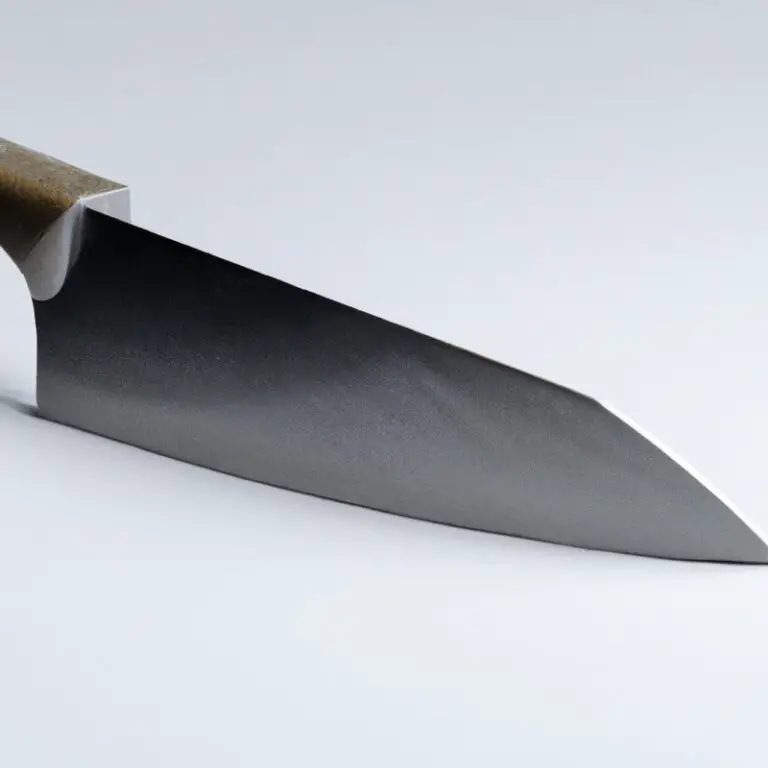What Are The Advantages Of a Thin Blade In a Gyuto Knife? Sharpness Boost
Key Takeaways:
- A thin blade on a Gyuto knife provides increased precision and control during slicing and chopping tasks.
- The thin blade also allows for a smoother and more efficient cutting experience, reducing fatigue and strain on the user.
- Gyuto knives with thin blades are often more versatile and can handle a wider range of cutting techniques and tasks.
- However, thin blades may require more maintenance and are more prone to chipping or breaking, so it is important to handle them with care and sharpen them regularly.
Have you ever wondered why some chefs swear by their thin blade Gyuto knives? The answer lies in the science behind the knife’s design.
A thin blade allows for better precision and improved control when cutting, leading to reduced fatigue and a versatile cutting experience.
But that’s not all – a thin blade Gyuto knife also offers fine edge retention, making it a durable and long-lasting tool in any kitchen. Join me as we dissect the anatomy of a Gyuto knife and explore the advantages of a thin blade for achieving finer and thinner slices in your preparations.
| Advantages of a Thin Blade in a Gyuto Knife | Description |
|---|---|
| Effortless Cutting | A thin blade requires less effort to cut through ingredients, making it easier to use for extended periods. |
| Better Control | Thin blades offer superior control over the blade’s edge, allowing for more precise cuts. |
| Easy Sharpening | A thin blade sharpens more quickly and easily, allowing for more efficient maintenance and longer blade life. |
| Reduced Food Loss | A blade that is too thick can cause unnecessary force and bruising, which can lead to a loss of flavor, juice, and overall quality of food. A thin blade is less likely to cause damage, reducing food loss and maintaining quality. |
| Flexible Applications | A thin blade can be used for various applications, from slicing delicate fish fillets to cutting through tougher meats and vegetables. |
Thin Blade Basics: Understanding the Anatomy of a Gyuto Knife
The Gyuto knife is a Japanese-style chef’s knife known for its versatility and precise cuts. The blade of a Gyuto knife is usually narrower than a Western-style chef’s knife, making it easier to maneuver and control.
A thin blade in a Gyuto knife refers to the thickness of the blade, and this is a crucial component that determines the knife’s performance.
Thin blades on Gyuto knives allow for better precision, reduced fatigue, and improved control, making it easier for users to handle and tackle different cutting tasks. Additionally, thin blades have superior edge retention compared to thicker blades, and they are more versatile, allowing users to cut different types of food with ease.
It’s crucial to understand the anatomy of a Gyuto knife’s blade to appreciate its advantages.
The blade is made up of the spine, the edge, and the tip. The spine is the top part of the blade, and it’s where users can grip the knife for better control.
The blade’s edge is the part that comes into contact with the food, and it’s where thinness is essential for precision.
The tip is the pointed end of the blade, and it’s typically used for detailed work. Overall, understanding the anatomy of a Gyuto knife’s blade is essential in comprehending how a thin blade can impact its performance.
The Science Behind the Advantages of a Thin Blade in a Gyuto Knife
The science behind the advantages of a thin blade in a Gyuto knife lies in its ability to provide better precision, reduced fatigue, and improved control while cutting. A thin blade allows for easy and light manipulation, resulting in a cleaner and more precise cut.
It also preserves the integrity of the food, minimizing damage to its structure.
The ergonomic benefits of a thin blade in a Gyuto knife include less hand strain and faster cutting motion, reducing fatigue and preventing repetitive stress injuries. The thin blade’s flexibility lends itself to tackling different cutting tasks, making it a versatile performer in the kitchen.
Additionally, the sharp edge of a thin blade Gyuto knife retains its sharpness for longer periods and is easier to sharpen.
A thin blade also creates finer and thinner cuts in your preparations, allowing for a more delicate and pleasant dining experience.
Better Precision: How a Thin Blade Improves Cutting Accuracy in Gyuto Knives
A thin blade in a Gyuto knife improves cutting accuracy by reducing the amount of friction between the blade and the food. With less material to push through, a thin blade requires less force, allowing for finer and more precise cuts.
Additionally, the thinness of the blade allows for better control and maneuverability, allowing for intricate cuts and slices with ease.
Overall, a thin blade in a Gyuto knife provides ultimate precision and accuracy in every use.
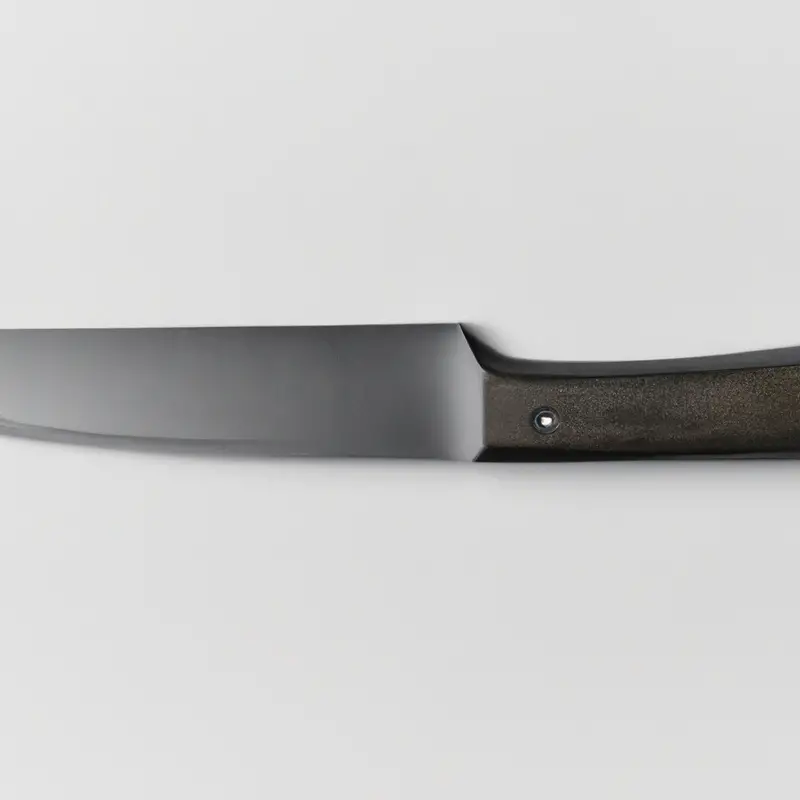
Reduced Fatigue: The Ergonomic Benefits of a Thin Blade in a Gyuto Knife
The thin blade of a Gyuto knife provides ergonomic benefits that can reduce fatigue when using the knife for extended periods. The reduced weight of a thin blade allows for quick and agile movement with less effort.
This means less pressure on your wrist and hand muscles, allowing for longer, more comfortable usage.
The thinner blade also provides enhanced flexibility, which promotes a more natural cutting motion. Overall, the ergonomic benefits of a thin blade in a Gyuto knife can help you work more efficiently, comfortably, and reduce the risk of strain or injury.
Improved Control: How a Thin Blade Helps You Handle Your Gyuto Knife Better
Improved control is one of the main advantages of using a thin blade in a Gyuto knife. The thinner blade offers enhanced maneuverability, allowing you to make precise cuts with ease.
With a thinner blade, you can control the movement of the blade more accurately, resulting in cleaner and more controlled cuts.
Additionally, the reduced weight of a thin blade helps reduce fatigue during prolonged use, allowing for better handling and control. The improved control offered by a thin blade makes it an ideal choice for those who want to achieve accuracy and precision when preparing their dishes.
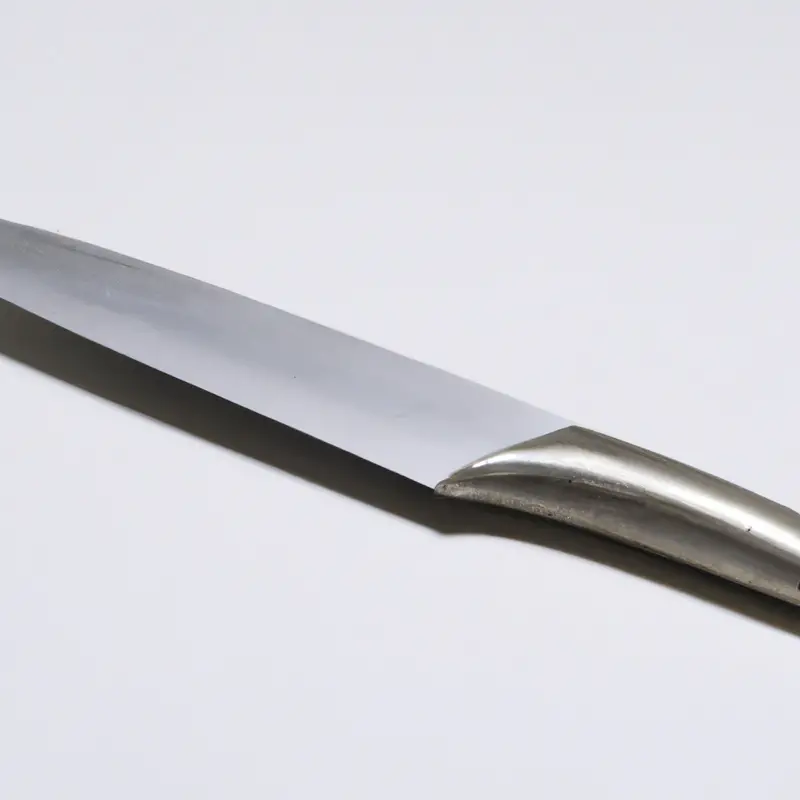
Flexible Performer: How a Thin Blade Helps You Tackle Different Cutting Tasks with Your Gyuto Knife
A thin blade in a Gyuto knife is a flexible performer that can tackle various cutting tasks with ease. Its narrow profile makes it ideal for slicing and dicing vegetables, fruits, and boneless meats.
The thinness of the blade allows you to maneuver the knife with precision, making it perfect for delicate tasks such as peeling, trimming, and filleting.
Additionally, the flexibility of the blade allows you to perform intricate tasks, such as skinning, deboning, and slicing meat into thin strips. With a thin blade Gyuto knife, you’ll have a knife that can handle anything from precise and detailed work to larger chopping tasks.
Fine Edge Retention: Why a Thin Blade Gyuto Knife is Long-Lasting and Durable
A thin blade Gyuto knife holds a fine edge for an extended period, making it extremely durable and long-lasting. The edge on a thin blade Gyuto knife cuts with less resistance than a thicker blade, reducing the amount of friction it encounters.
A thin blade also allows for a sharper angle, which means less material is removed when sharpening, extending the life of the blade.
Additionally, the reduced weight of a thin blade knife means there is less stress on the blade when in use, further increasing its longevity. For those looking for a knife that can last for years with proper care, a thin blade Gyuto knife is a wise investment.
Versatile Cutting: The Different Food Types You Can Cut with a Thin Blade Gyuto Knife
A thin blade Gyuto knife is suitable for versatile cutting of different food types. The sharpness of its blade makes it ideal for precise cuts requiring less force and pressure.
You can effortlessly slice different meats, vegetables, fruits, and herbs with a thin blade Gyuto knife.
It is excellent for filleting and trimming meat or fish, cutting herbs without bruising them, and slicing fruit and vegetables thinly. The thin blade Gyuto knife is also effective in carving roasts or poultry, making it a perfect knife for both professional chefs and home cooks.
Sharpening Made Easy: How to Sharpen a Thin Blade Gyuto Knife Easily and Effectively
To sharpen a thin blade Gyuto knife easily and effectively, follow these steps:
- Purchase a sharpening stone with a grit level between 1000-5000.
- Soak the sharpening stone in water for 10-15 minutes before use.
- Hold the knife at a 15-20 degree angle and run it along the stone in a back-and-forth motion.
- Start with the coarsest side of the stone and gradually move to the finer side.
- For optimal sharpness, finish with a leather strop or honing rod.
- Clean the blade with a damp cloth after sharpening.
It’s essential to maintain the correct angle while sharpening for best results. Remember to sharpen your thin blade Gyuto knife regularly to ensure its durability and longevity.
Fine Cuts: How a Thin Blade Gyuto Knife Helps You Achieve Finer and Thinner Slices in Your Preparations
A thin blade Gyuto knife helps you achieve finer and thinner slices in your preparation due to its sharpness and flexibility. The thinness of the blade allows for greater precision and control, letting you cut through meat, vegetables, and fruits with ease.
The finer edge also minimizes wastage by producing thinner slices, which is especially beneficial when working with expensive ingredients.
With a thin blade Gyuto knife, you can create clean cuts that enhance the presentation of your dishes. Overall, a thin blade Gyuto knife is a top choice for chefs who value precision and finesse in their cooking.
Final Verdict
A thin blade in a Gyuto knife offers numerous advantages to a chef or home cook. From better precision and reduced fatigue to improved control and versatile cutting, a thin blade Gyuto knife is a flexible performer that provides fine edge retention and makes sharpening easy.
Whether you are slicing meat, vegetables, or fruits, a thin blade Gyuto knife helps you achieve finer and thinner cuts with ease.
As an expert in the field, I can confidently recommend investing in a high-quality thin blade Gyuto knife to elevate your culinary skills. With the right technique and proper care, this knife will be a reliable and durable tool that significantly enhances your cooking experience.

